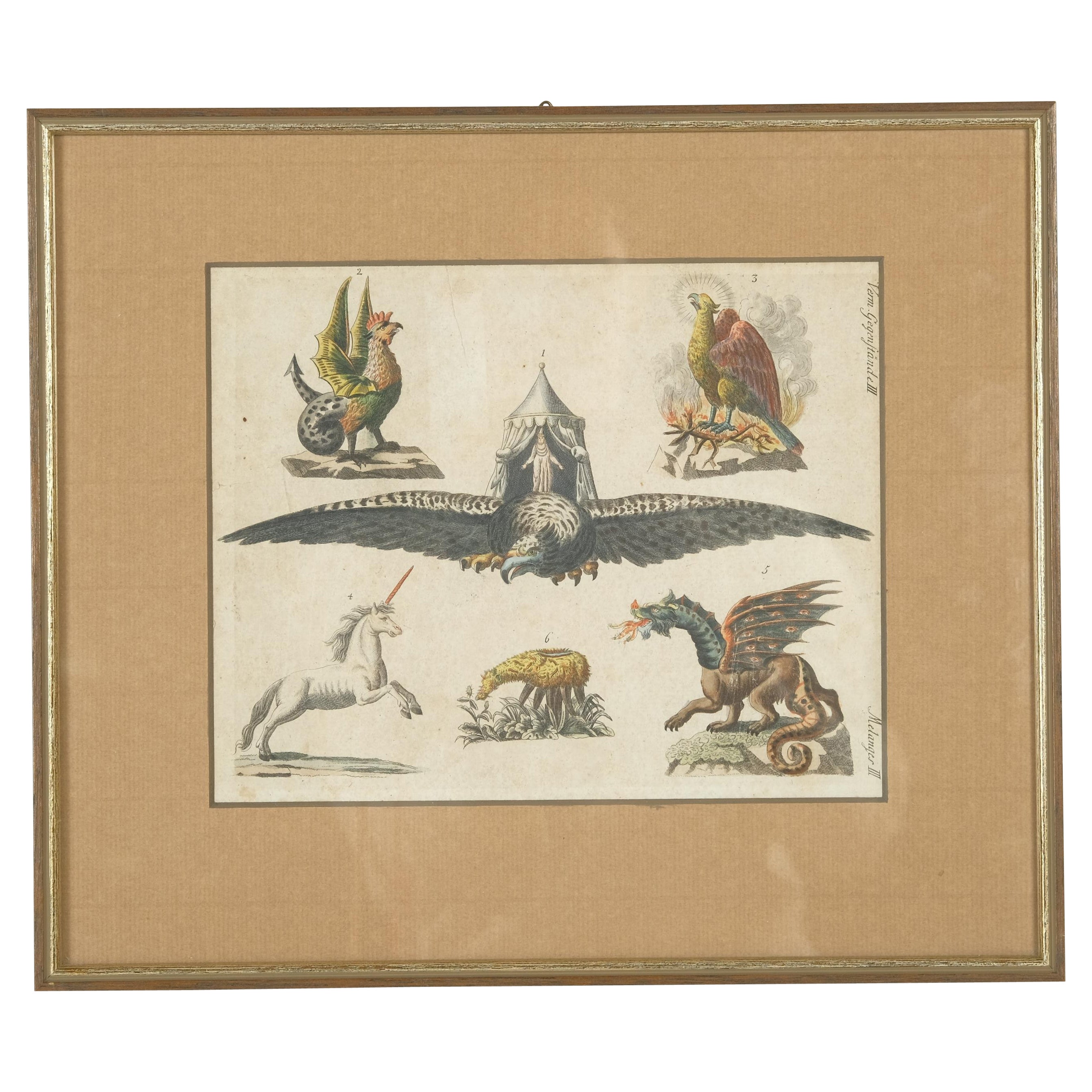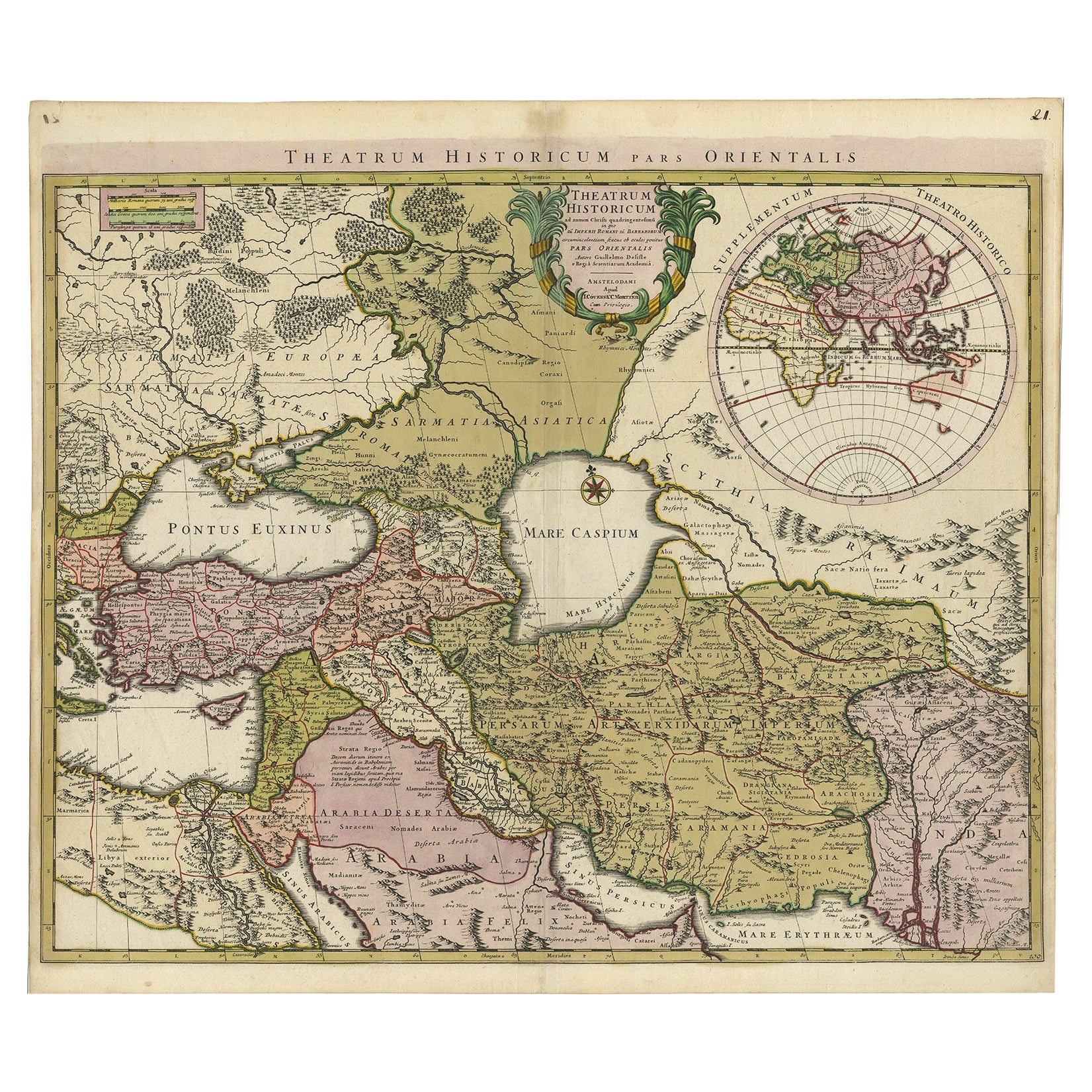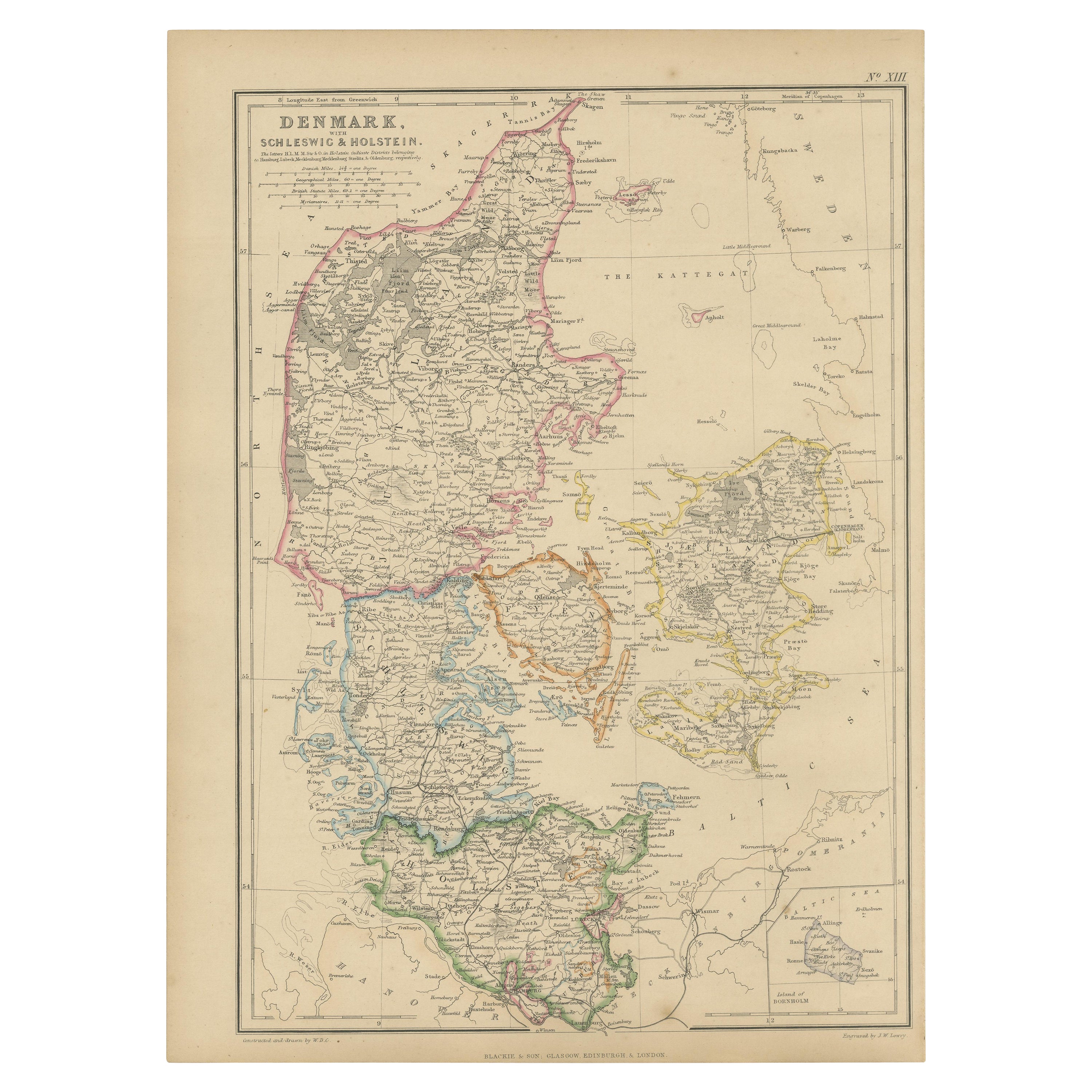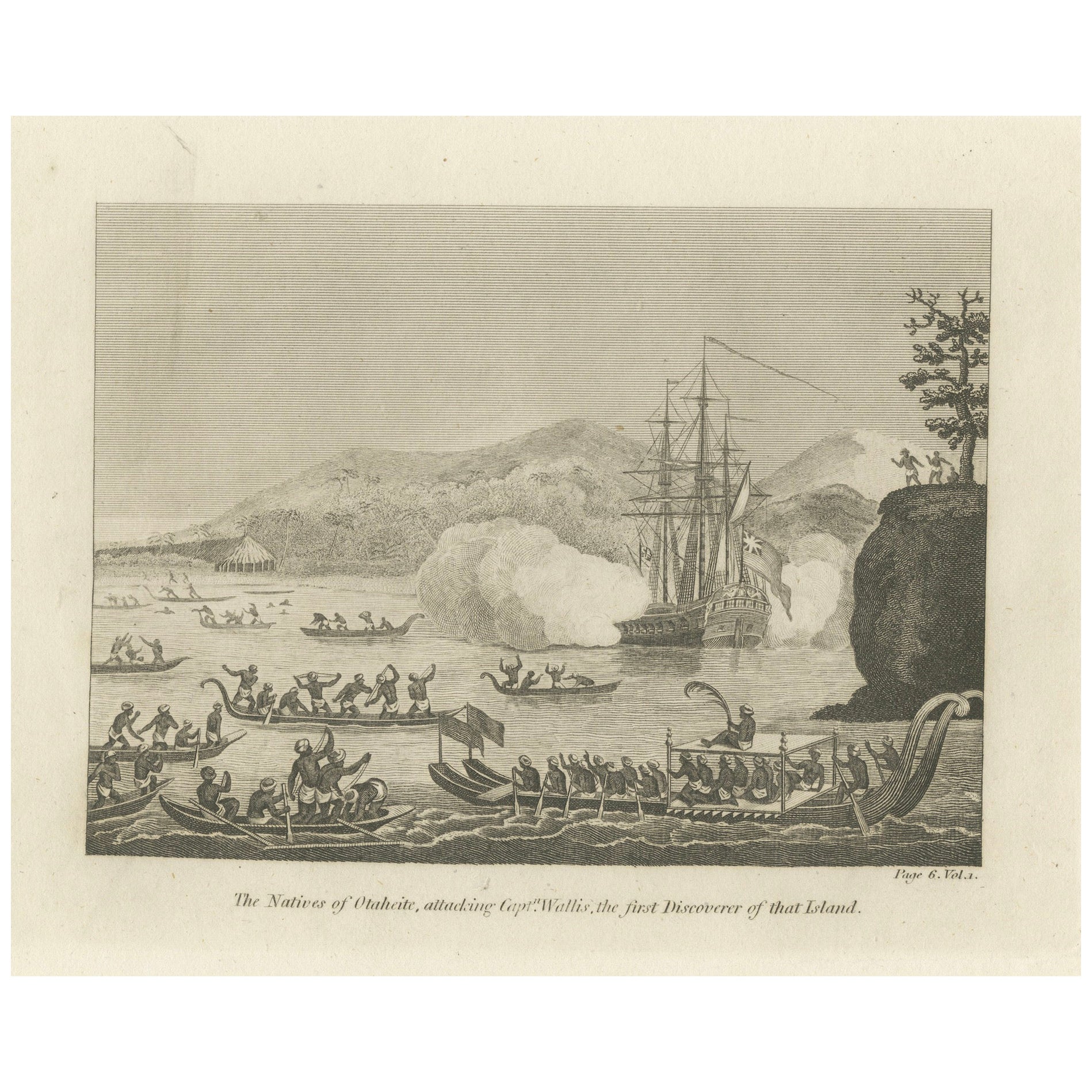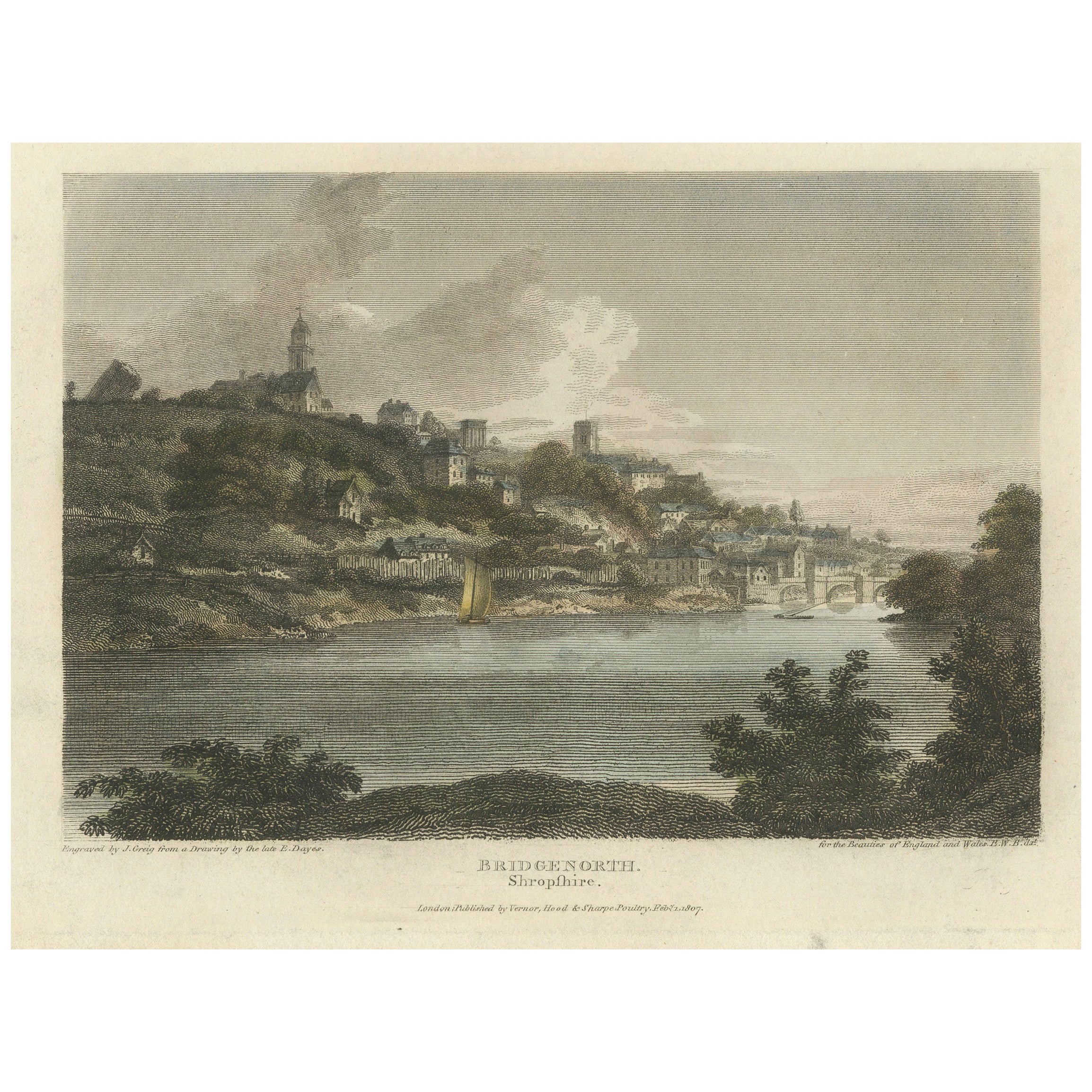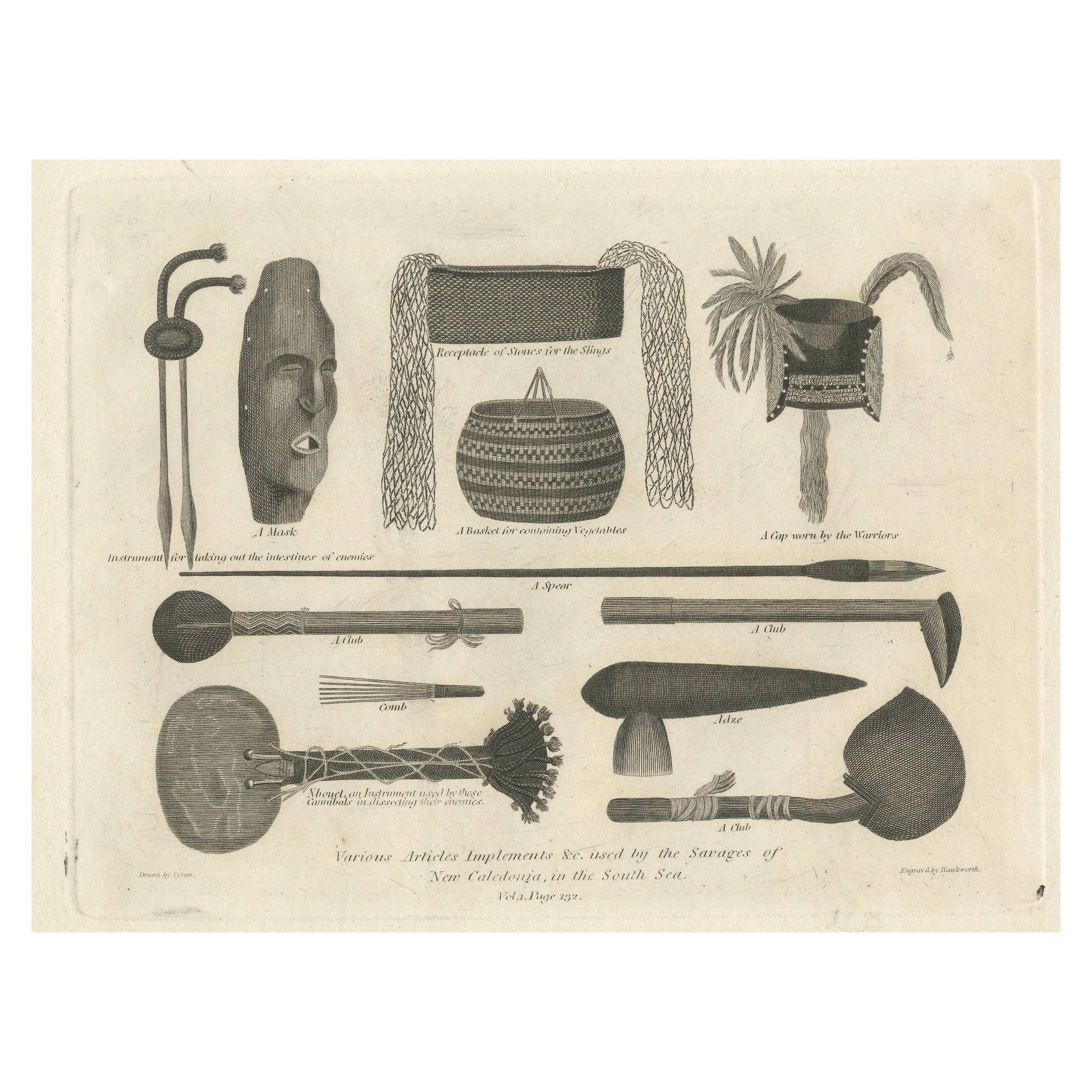Items Similar to Enchanting Norwich: A Historical 1801 Engraved View by W. Angus and E. Dayes
Want more images or videos?
Request additional images or videos from the seller
1 of 7
Enchanting Norwich: A Historical 1801 Engraved View by W. Angus and E. Dayes
About the Item
An original hand-colored engraving of Norwich in England.
The text within the image provides several pieces of information about the print:
1. "NORWICH." - This is the title of the print, indicating that the image is a depiction of Norwich, a city in England.
2. "Engraved by W. Angus from a drawing by E.Dayes." - This credits the engraver W. Angus and the artist E. Dayes (Edward Dayes), indicating that the engraving was made based on a drawing by Dayes.
3. "For the beauties of England and Wales." - This suggests that the print was part of a series or publication showcasing notable places in England and Wales.
4. "London Published by Vernor & Hood, Poultry Octo.1.1801." - This is the publication information, indicating that the print was published in London by Vernor & Hood, located on Poultry street, on October 1, 1801.
The print is likely to be part of a larger work, such as a book or a series of prints, that aimed to illustrate and describe the picturesque and notable locations throughout England and Wales at the beginning of the 19th century. Norwich, being a significant city with historical and cultural importance, would have been a worthy subject for such a collection. The detailed engraving would have served to convey the architectural and scenic beauty of Norwich to readers and viewers of the time.
- Dimensions:Height: 4.93 in (12.5 cm)Width: 7.29 in (18.5 cm)Depth: 0 in (0.02 mm)
- Materials and Techniques:Paper,Engraved
- Period:
- Date of Manufacture:1801
- Condition:Good, given age. General age-related toning. Later handcoloring. A small piece of tape on the reverse. Small upper margin.Please study scan carefully.
- Seller Location:Langweer, NL
- Reference Number:
About the Seller
5.0
Platinum Seller
These expertly vetted sellers are 1stDibs' most experienced sellers and are rated highest by our customers.
Established in 2009
1stDibs seller since 2017
1,933 sales on 1stDibs
Typical response time: <1 hour
- ShippingRetrieving quote...Ships From: Langweer, Netherlands
- Return PolicyA return for this item may be initiated within 14 days of delivery.
More From This SellerView All
- Mythos and Majesty: A Tapestry of Heraldic Legends Engraved and Framed, ca.1801Located in Langweer, NLThis antique engraving in frame depicts various mythical creatures and heraldic symbols in old original hand-coloring. Itresembles the style of Friedrich Justin Bertuch. Friedrich Justin Bertuch (1747–1822) was a German publisher and patron of the arts who is well-known for his "Bilderbuch für Kinder" (Picture Book for Children), which was published in multiple volumes from 1790 to 1830. This extensive work included thousands of hand-colored illustrations covering a wide array of subjects, from animals and plants to costumes, mythological figures, and more. The images depicted in the engraving include: 1. A large bird with spread wings at the bottom of the image, possibly an eagle, which is a common symbol of power and is widely used in heraldry. 2. A rooster with dragon-like wings and a tail, standing on a pedestal, which might be a chimera or a cockatrice, creatures often found in mythology and heraldic emblems. 3. A phoenix or a peacock, burning with flames around it, symbolizing rebirth and immortality, next to a tent and a figure in medieval clothing...Category
Antique Early 1800s Prints
MaterialsPaper
- Finely Engraved Historical Map of Middle East and Asia, c.1745Located in Langweer, NLDescription: Antique map titled'Theatrum Historicum pars Orientalis.' Finely engraved historical map with a profusion of details. It shows the Middle East and Asia. Decorative ti...Category
Antique 1740s Maps
MaterialsPaper
- 1859 Denmark and Schleswig-Holstein Map: A Historical View from Blackie's AtlasLocated in Langweer, NLThe "Antique Map of Denmark with Schleswig & Holstein" from 'The Imperial Atlas of Modern Geography', published by W. G. Blackie in 1859, is a valuable historical document that provi...Category
Antique Mid-19th Century Maps
MaterialsPaper
- Encounters at Dawn: The Standoff at Tahiti with Captain Wallis Engraved, 1801Located in Langweer, NLTitle: "The Natives of Otaheite Attacking Capt. Wallis, The First Discoverer of that Island" This engraving depicts a significant historical encounter between the natives of Tahiti ...Category
Antique Early 1800s Prints
MaterialsPaper
- 1801 Engraving of New Caledonian Implements and AttireLocated in Langweer, NLVarious Articles Implements And Used By The Savages Of New Caledonia In The South Sea Description: This 1801 copperplate engraving from George Alexander Cooke's "Universal Geography" displays various tools and clothing of the indigenous people of New Caledonia in the South Sea. Items depicted include a mask, a basket for containing feathers, a warrior's cap, instruments for tattooing, a club, a spear, and other artifacts integral to the daily and ceremonial life of the New Caledonian people. The engraving provides a visual documentation of the cultural artifacts encountered by explorers like Captain James Cook during their voyages. The print includes various items used by the indigenous people of New Caledonia: 1. A mask, likely used in rituals or ceremonies. 2. A basket for containing feathers, possibly for storage or transport of valuable items. 3. A cap worn by warriors, part of their traditional attire. 4. Tattooing instruments for marking the skin with cultural or status symbols. 5. A club, which could be a weapon or a symbol of power. 6. A spear, used for hunting or as a weapon. 7. An adze, a tool for woodworking...Category
Antique Early 1800s Prints
MaterialsPaper
- Engraved View of Bridgnorth, a Town in Shropshire, England, 1807Located in Langweer, NLThis engraving is part of a collection showcasing the beauty of England and Wales, a series that was common in the 18th and 19th centuries to celebrate and document the picturesque landscapes and significant towns of Britain. The text provided in the last image offers several details: 1. The title of the engraving is "BRIDGENORTH. Shropshire." 2. It was engraved by J. Greig from a drawing by the late E. Dayes. 3. The engraving was published in London by Vernor, Hood & Sharpe Poultry, February 1st, 1807. 4. It was created for "The Beauties of England and Wales." The artwork depicts Bridgnorth, a town in Shropshire, England. The engraving would have been intended to capture the charm and appeal of Bridgnorth, with its notable bridge and surrounding architecture. Engravings like this one were often collected by those who appreciated the artistry of such views and by those who were interested in the topographical and historical significance of the location. E. Dayes (the late Edward Dayes) was a well-known artist of the period, and J. Greig was the engraver who transferred Dayes' artwork into the medium of engraving. The publication date of February 1st, 1807, places this work in the early 19th century, a time when such engravings were a popular form of mass media, providing a visual understanding of places that many people might not have the opportunity to visit themselves. The engraving serves as both an artistic and historical record, capturing Bridgnorth in the early 19th century with a level of detail and craftsmanship that is characteristic of the period's topographical art...Category
Antique Early 1800s Prints
MaterialsPaper
You May Also Like
- Original Antique Print of A Stag, Circa 1801Located in St Annes, LancashireGreat image of a stag Copper-plate engraving Published by Bunny and Gold . Dated 1801 Unframed.Category
Antique Early 1800s English Georgian Prints
MaterialsPaper
- Vintage Poster Historical Construction Gothic Dome Medieval City Historical SiteLocated in Berghuelen, DEThe double sided poster shows the construction of a Gothic dome and on the backside the view inside a medival city. Colorful print on paper. Measur...Category
Mid-20th Century German Country Prints
MaterialsPaper
- Catalogue of Engraved Views, Plans, Etc., Of New York City, 1st EdLocated in valatie, NYA catalogue of engraved views, plans, etc., Of New York City, (The Collection of Percy R. Pyne II). Privately Printed by The De Vinne Press, New York, 1912. Limited to 100 copies. Gr...Category
Early 20th Century American Books
MaterialsPaper
- "The Battle of Bunker's Hill, Near Boston" Engraving by James Mitan, 1801By John TrumbullLocated in Colorado Springs, COThis dramatic Revolutionary War engraving of the Battle of Bunker Hill is after the famous 1785 oil-on-canvas by John Trumbull. Capturing the intensity of the battle, the engraving centers on Major John Small restraining a “lobster-back” from bayoneting Major General Joseph Warren. Warren lies mortally wounded in the midst of chaos around him. In the background, British forces are seen cresting the last defenses of the brave, yet green army of Colonial soldiers. The Battle of Bunker Hill was fought on June 17, 1775, in the early stages of the American Revolutionary War. The battle is named after Bunker Hill in Charlestown, Massachusetts. Although it was the original objective of both the Colonial and British troops, the area was only peripherally involved in the battle. Rather, the majority of the combat took place on the adjacent Breed’s Hill. The battle pitted a more organized British force against a young and inexperienced American militia. Although considered a tactical victory for the British, it came at the cost of considerable casualties, including a large number of officers. The battle demonstrated that the inexperienced American militia was able to stand up to the British army troops in battle. The battle results discouraged the British from any further frontal attacks against well-defended front lines. American casualties were comparatively fewer, although their losses included Gen. Joseph Warren. During the battle, the patriot-turned-painter John Trumbull (1756-1843) was stationed in Roxbury on the far side of Boston, where he could hear the sounds of fighting. In late 1785, Trumbull decided to devote himself to the depiction of Revolutionary War scenes, a series of eight epic pictures. From the beginning, Trumbull intended for the paintings to be later engraved for sale. Trumbull began the oil-on-canvas of The Death of General Warren at the Battle of Bunker’s Hill and The Death of General Montgomery in the Attack of Quebec, in the studio of Benjamin West in London. Bunker’s Hill was completed in March 1786; Trumbull started Attack of Quebec in February 1785 and finished it before he brought it to Paris in 1786. He then started The Declaration of Independence at Thomas Jefferson's house in Paris. As soon as Bunker’s Hill was completed, Trumbull searched for a suitable engraver in London. He was unsuccessful, as many British engravers were nervous about engraving an American battle...Category
Antique Early 1800s English Federal Prints
MaterialsPaper
- Set of 12 Original Antique Sporting Prints. Dated 1801Located in St Annes, LancashireGreat set of 12 sporting prints Copper-plate engravings after the original drawings mainly by Gilpin Published by Bunney & Gold, London Unfra...Category
Antique Early 1800s English Folk Art Prints
MaterialsPaper
- "View of Broadway, N.Y. 1853" Engraving by J. Wade and H. BricherLocated in Miami, FL"View of Broadway, N.Y. 1853" Engraving by J. Wade and H. Bricher Offered for sale is an engraving drawn by J. Wade and engraved by H. Bricher titled "View of Broadway, N.Y. 1853 f...Category
Antique Mid-19th Century American Prints
MaterialsGlass, Wood, Paper
